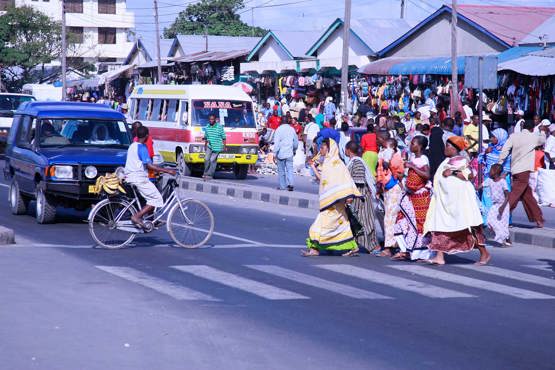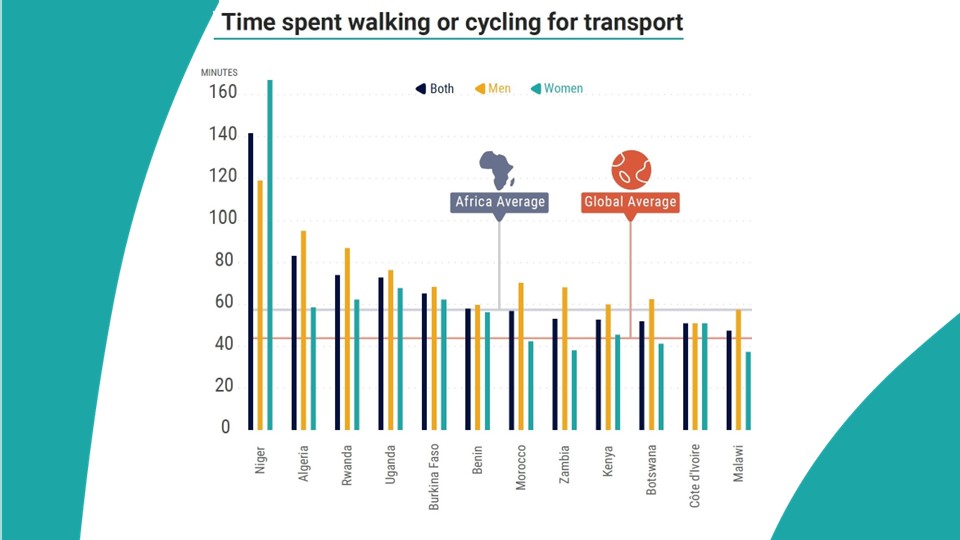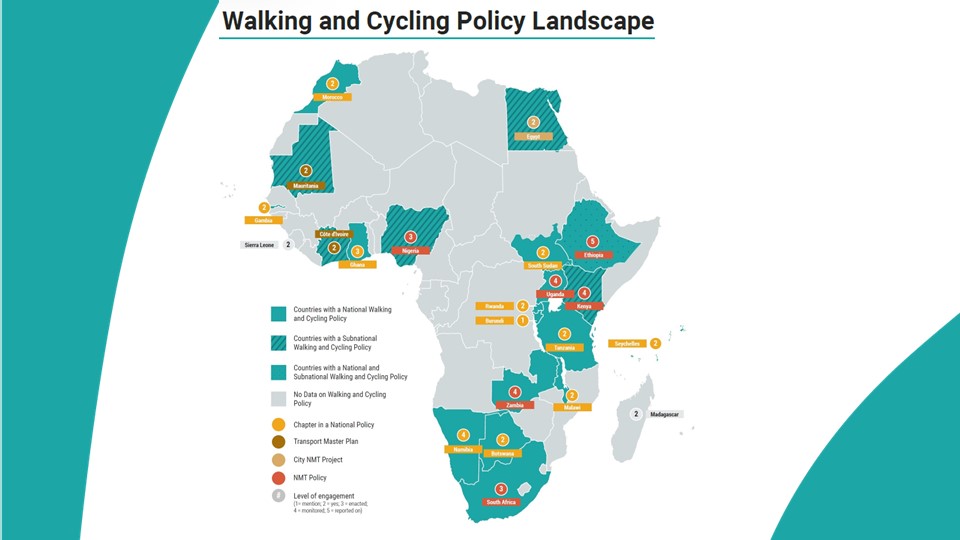Pan-African walking and cycling best practice report launched with support of FIA Foundation

A new report, the first to gather and analyse data on walking and cycling from highly diverse contexts in all 54 African countries, has been published by the UN Environment Programme (UNEP), the UN Human Settlements Programme (UN-Habitat), and the Walk21 Foundation, the development of which was been supported by the FIA Foundation.
The report, Walking and Cycling in Africa – Evidence and Good Practice to Inspire Action examines the policies and data addressing the 78 percent of the African population which commutes by foot and on bicycles every day. Difficult, dangerous and uncomfortable conditions on the roads, alongside rising motorisation rates, has grave implications for people’s health and the environment: 261 pedestrians and 18 cyclists are killed every day on the roads, along with over 258,000 deaths annually as a result of air pollution. These findings appear the report alongside recommendations for policies and investments to protect and enable Africans who commute by walking and cycling – often for lack of another choice. The report finds that one out of five Africans are walking or cycling 56 minutes a day on average – 12 more than the global average. While daily physical activity is encouraged by the World Health Organization, high levels of physical activity for transport can also be a symptom of inadequate public transport facilities and poor land use planning.
The report further examines data on standards of roads used by pedestrians and cyclists and their degree of satisfaction and comfort against existing policies. In terms of safety, around 95% of assessed roads have been rated as inadequate for pedestrians and cyclists by the International Road Assessment Programme (iRAP) rated roads according to safety levels – making Africa the world’s most dangerous continent for walking and cycling. In addition, fewer than one-in-three Africans live within 1km of public transportation – the lowest in the world. This leads to low public satisfaction, growing rates of private car ownership as income levels rise and rising levels of air pollution – the second largest cause of death in the continent.
To reap the full benefits of walking and cycling, government policies must make walking and cycling a safe and inclusive experience. The report calls for:
- Greater protection of pedestrians and cyclists, with a special focus on the needs of women, children and people with disabilities;
- Investments in adequate infrastructure, including safer road crossings, wider footpaths and protected bike lanes, shelter from weather, secure bike parkings, lighting, and access to public transportation;
- Better data collection, including mapping public transportation stops, crash and injury data, consulting with communities on policies and street design processes, and measure public satisfaction.
“This report highlights the need for continuous investments to improve mobility infrastructure for walking and cycling to encourage diversification and inclusion, enhance connectivity with other transport networks, increase road safety and substantially boost the quality of life for most city dwellers” said Prof. Manuel de Araújo, Mayor of Quelimane. “Multifunctional action exhibits short, medium and long-term positive impacts and makes our cities and the people resilient, vibrant, safer and healthier.”

The report notes progress made in Addis Ababa with plans for over 1000km of pedestrian routes and cycling lands, in Yaoundé, with requirements for every building to include pedestrian access, and in Nairobi, with its commitment of 20% of its budget ring-fenced for investment in walking and cycling infrastructure, as well as elsewhere in Ghana, Senegal, and Zambia.
“Strategic infrastructure planning can improve the safety, health and comfort of more than one billion people on the continent, while simultaneously maintaining Africa’s low carbon footprint,” said Inger Andersen, Executive Director of UNEP. “A transformation to safer and sustainable transport – steered by leaders of African cities – can create more liveable, equitable and prosperous cities.”
Sheila Watson, Executive Director of the FIA Foundation, added: “Walking and cycling must be the first consideration for African transport planning. Putting people first by supporting walking and cycling will help create liveable, sustainable and equitable cities where people will be able to live healthily. The FIA Foundation is proud to have supported this report, and to partner with UNEP on the Share the Road project which both make the case for active mobility to become a political priority.”

Since the COVID-19 pandemic, there has been a global increase in the number of people walking and cycling. This is in line with the trend of recent years in cities which prioritise pedestrian and bicycle roads in their urban mobility plans. Overall, despite inspiring actions across the continent, Africa has been the outlier: only 19 countries (35 per cent) have a walking and cycling policy and overall planning isn’t yet inclusive and people focused.
“There is a unique opportunity for change in the way we organise and plan our urban areas. Building on the global momentum during COVID-19 when cities expanded walking, cycling and public spaces, I would like to call on decision-makers in Africa to embrace the learnings from this report,” said Maimunah Mohd Sharif, UN Habitat’s Executive Director. “Investments in walking and cycling in Africa are investments in people. There is no other more cost-effective solution to achieve road safety and climate goals simultaneously.”
Read the full report here: Walking and Cycling in Africa - Evidence and Good Practice to Inspire Action | UNEP - UN Environment Programme



